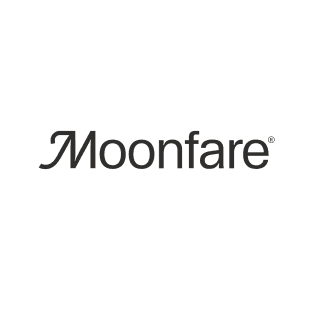
Globally relevant content for websites and apps
Agency for internationalization and localization
Expertise that drives results:
- Internationalization: Set up and scale websites, online stores, or apps for global markets
- Localization: Tailor your content to fit each target market
- Result: Reach local audiences with relevant, needs-based communication
With years of experience in website internationalization, we support companies on their path to global markets. Our core strength: localizing content, not just translating it. We tailor your web content for each target market, so your products and services resonate locally. That means understanding what matters on the ground and speaking to it directly. Our native-speaking experts bring in-depth knowledge of each market to the table. The result: content that’s structurally, linguistically, and visually aligned with local expectations. Because only content that addresses what truly matters to your audience can gain real traction in new markets.
“Localization is the key to creating content that works across international markets. Thanks to our global network of native-speaking digital experts, we help you prepare your platform for global success. Whether it’s text, visuals, video, or audio – we’ll make sure your message resonates with local audiences.”
INTERNATIONAL DIGITAL STRATEGY WITH QWP
Website internationalization: Why content localization is key to success
Tailored content for international websites, shops, and apps
If your business focuses on just one market, growth opportunities are inevitably limited. Even for innovation leaders, it gets harder over time to win new customers in a saturated domestic market. Those who seek real opportunities look beyond borders. Internationalization opens up access to new markets, so you can successfully promote your products and services worldwide.
In today’s digital landscape, scalable platforms are the foundation of international growth. But simply translating your content won’t get the job done. Your audiences think, search, and decide differently in every market. That’s why localization goes far beyond translation. It’s about adapting your content to local expectations—linguistically, structurally, and strategically. What topics are relevant to your audience? What terminology do they use? What local SEO keywords matter? Are there cultural or legal specifics to consider? Whether it’s text, visuals, video, or audio, our native-speaking market experts make sure your content strikes the right chord in every region.
Internationalize your website with qwp
Rely on our years of experience and global expert network to guide your internationalization journey, from translation and content creation to e-commerce, online shops, and SEO. We support you from the very first step: starting with a detailed assessment of your current setup, followed by strategic planning and implementation. As your international digital agency, we’re by your side throughout the entire process. Together, we’ll make sure your website content is relevant and engaging for your target audiences. In collaboration with IT specialists from each target market, we also adapt the technical and functional aspects of your digital platforms, so your products and services can be presented and marketed in the best possible way to local customers.
Essentials
The 5 key aspects of effective website localization
- Linguistic & content-related:
Identify market-specific audience language and terminology and integrate locally relevant contexts and use cases. - Cultural:
Adapt content to the cultural expectations of each target market, including topics, tone, and formal details like date or time formats. - Transactional:
Tailor currencies, payment methods, address formats, and character sets to each region to boost conversion in e-commerce.
- Local communication:
Use local phone numbers, addresses, and customer support in the local language to build trust with regional audiences. - Navigational:
Adapt structure and navigation to match local usage patterns for a seamless user experience and higher engagement.
Build your global online presence
Why website internationalization pays off
Why more and more companies are going international
Global studies consistently show that e-commerce customers prefer to shop in their own language. This builds trust and significantly increases the likelihood of successful transactions involving your products or services. Using localized microsites or automated translation tools might seem like a shortcut, but they rarely deliver. In most cases, they result in poor user acceptance and underwhelming business results. A far more effective, although more demanding, approach is to fully internationalize your web portal, online shop, or app. Ensuring your platform works technically across all markets is only one part of the puzzle. The real key lies in content, because only truly localized content allows you to reach and engage your international audiences. That’s where we come in. We localize your international website and app contentto resonate in every target market, whether it’s text, visuals, audio, or video. This enables your brand messaging to hit the right tone in each region and speak directly to your audience’s needs. At the same time, we make sure your content stays consistent and on-brand across all markets. This creates a strong, locally relevant presence and reinforces your global brand identity and marketing impact.
What is the difference between localization and internationalization?
The two terms are often used in the same breath, and for good reason: they’re closely related. Internationalization is the process of preparing a product or service for use across different countries and languages. A website, online store, or app is made technically and functionally ready for global rollout. Localization, in contrast, refers to the specific adaptation of content for each target market. This includes taking into account local characteristics such as linguistic, economic, political, cultural, geographic, or ethical differences between the source and target markets. Both processes are interdependent and work best when combined. Website internationalization is most likely to succeed when all localization tasks are carried out efficiently. After all, companies that truly understand local expectations and reflect them in their content and presentation are much more likely to be seen as relevant and trustworthy in their target markets.
Implement internationalization & localization efficiently
Checklist: Preparing technology, user experience, and content for international and local markets
- Top-level domain names with country code (ccTLDs): Using country-specific top-level domains signals to both users and search engines that your website is tailored to a specific target market (e.g., .de for Germany, .it for Italy). This significantly increases local trust and acceptance.
- URL structure: Readable, well-structured URLs foster user confidence. Country-specific TLDs also help simplify site structure, although they can be more costly. For subdirectories, separating languages technically requires more effort.
- User interface (UI) localization: Website design should consider that the interface will be used across multiple languages. Buttons may need to be wider or narrower depending on the language, text density can vary significantly, and even the direction of writing, such as Arabic, Hebrew, or Farsi, may require layout adjustments.
- Content management system (CMS): The right CMS is essential for successful internationalization. It should allow you to manage and update your content efficiently across multiple languages and regions, whether for your website or app.
- Translation: Automatic translation tools should be avoided. Instead, native speakers should handle localization—and enrich content with local terminology and phrasing. Both users and search engines reward relevance and quality that truly reflect the local context.
- Indexing: When entering a new market, make sure your content is indexed correctly. Which content is meant for users, and which is designed purely for search engines or for visibility in search engine results pages (SERPs)? Planning this distinction from the start helps ensure both user experience and SEO performance.
- Language targeting: Your website should reflect both multilingual countries, like Canada or Switzerland, and the differences within same-language markets. English, for example, is widely used. But vocabulary, tone, and spelling differ significantly between the UK, the US, Australia, or Singapore. You should also consider whether all products or services are available—or even relevant—in every market. Using the hreflang meta tag allows you to serve the right content to the right audience in each region.
- SEO strategy: Each country requires a tailored approach to search engine optimization. Market-specific characteristics, regional keywords, and local user behavior should all be factored into your SEO strategy.
User experience & local relevance matter
How to localize websites, online stores, and apps effectively
What’s essential in e-commerce localization?
The biggest challenge in internationalizing online stores is making sure that users from all target markets feel comfortable navigating your platform. That’s the foundation for any kind of transaction. And it only works if your content is tailored to your audience with the right visuals, terminology, and tone. Visual and design tweaks that reflect local preferences can significantly improve the user experience. You build trust by using familiar currencies, characters, and symbols. A seamless checkout process should include locally preferred payment options. And don’t underestimate the value of listing local phone numbers, addresses, and customer support in the local language.
What to consider when localizing apps?
In apps, call-to-action buttons and navigation play a critical role. Everything must be clearly labeled to guide users through the process. This includes language, abbreviations, and even symbols. What seems intuitive in one region can be offensive in another. For example, a thumbs-up icon might cause confusion or even offense depending on the culture. Successful app localization means reviewing icons and labels carefully, choosing them purposefully, and designing intuitive user flows for every market.
Trusted by companies across industries






All trademarks, logos, and brand names are the property of their respective owners.
Best practices
Guidelines for localization & website internationalization
- Strategy: Plan comprehensively and implement gradually. Develop a strategy that covers all target markets and leaves room to scale in the future. Define your goals, analyze your audiences, audit existing content, and decide what should be adapted or reused. Build translation into your process and monitor the quality of all steps along the way.
- Design: Establish a multilingual, flexible design that allows for layout adjustments in different language regions.
- Content management system: Use a modern, scalable CMS that lets you efficiently manage, translate, and publish international content.
- Clean source code: A lean and well-structured codebase makes localization easier. Removing unnecessary snippets improves not only your site’s crawlability, but also its technical maintainability.
- Use symbols carefully: Symbols that seem obvious in your home market may be confusing or carry different meanings elsewhere. Careful research and restrained use can prevent misunderstandings.
- Avoid hard-coded text and characters: Hard-coded content must be updated manually and can slow down localization workflows.
- Keep user behavior in focus: Even with thorough research, user behavior can shift. And customers may react differently than expected. Stay flexible. Ongoing testing, usage analysis, and agile iteration are key to long-term success.
Get in touch
Smart solutions, made for you.
Your users are our priority: in every piece of copy and at every touchpoint, across the globe. We help you optimize the user experience of your mobile apps, websites, or online stores. And scale your products and content internationally.

Brendan Reiswich
Business Development Manager
Phone: +49 30 30809311
